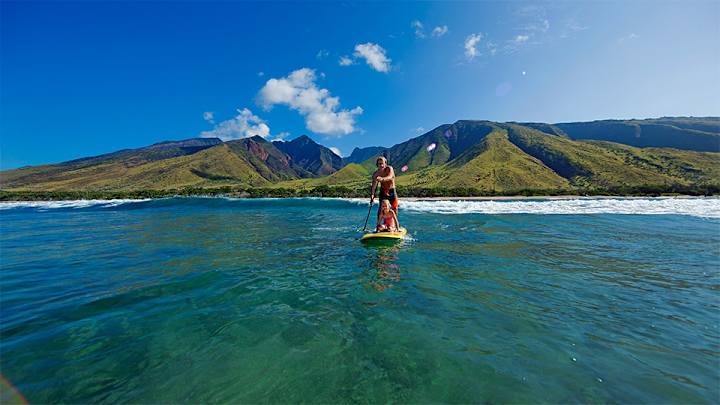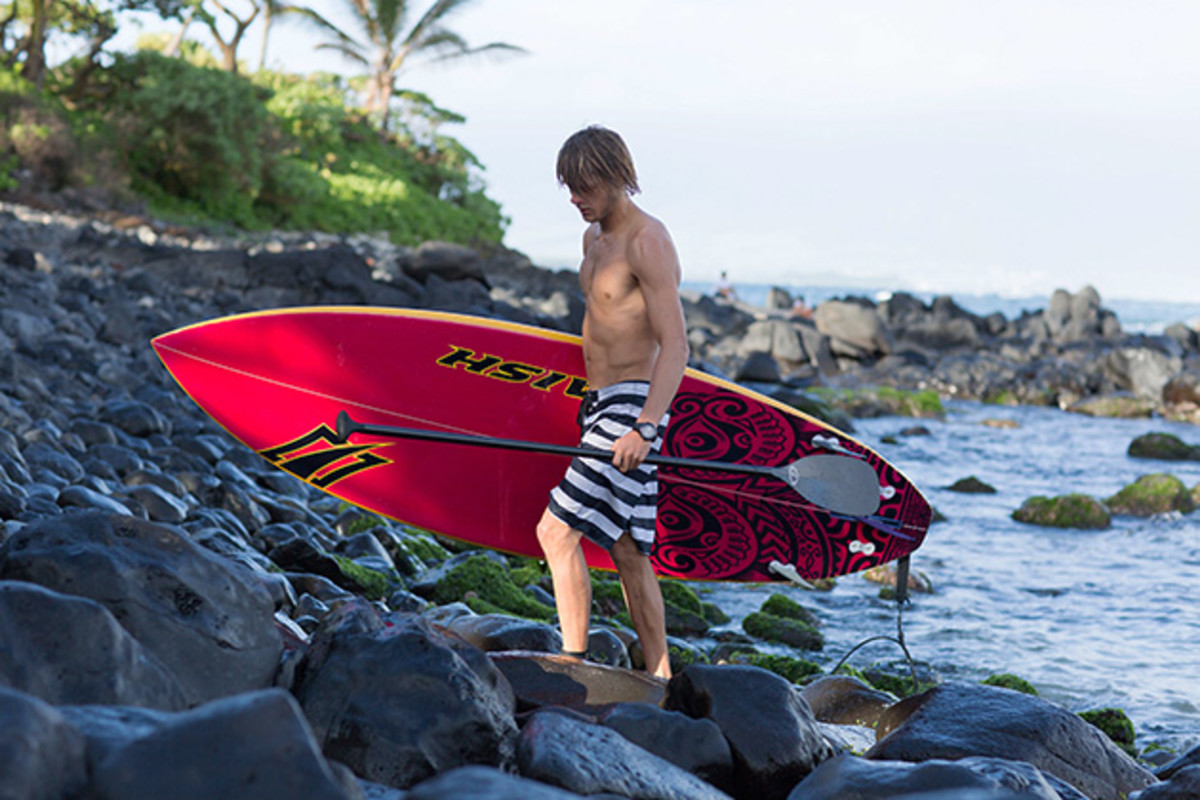Tech Talk: The science behind designing SUP boards and paddles

The perfect SUP board rests solely with the rider, Naish designer MichiSchweiger tells SI.com from Hawaii, exactly why you see an array of SUP board desings on the marketplace. For finding that perfect shape, “I would say that perfect truly depends on making the right choice on which board to choose for the right purpose,” Schweiger says. “That is the trick.”
SUP board types
Whether it's Naish, Starboard, BIC, Tower or any other brand, expect to find a range of boards that can cater to everything from riding waves to touring the flatwater.
Schweiger says finding the right board involves an understanding of water conditions, the rider's weight and skill level. At Naish, the company created five key categories. A longboard-style SUP proves the most universal, suitable for waves or flatwater. Going shorter and wider than a traditional SUP setup stabilizes riders in surf. The medium- to pro-level surfing-oriented riders tend to up the size of their surf option. Performance racing boards grow longer and narrower to slice through water. The fifth category often encompasses a touring-style board of substantial size, but also with a focus on comfort and storage.
SUP board construction
Lessons from Lynn Hill: Learn the basics from a rock climbing legend
Don’t expect to find just one material making up a SUP board. “We mainly use glass, carbon and carbon/Kevlar fibers in different combinations with wood, high-density PVC foam and Soric as sandwich materials to create light, but durable boards,” Schweiger says.
Using, for example, glass fiber in combination with wood creates a highly durable board at a positive weight ratio that meshes with uses from surfing to touring. On the other end, using carbon and Kevlar with Soric PVC goes super lightweight for high-end surfing.
“It is important to find the right compromise between lightweight, durability and price,” Schweiger says.
The easiest way to up the performance? Improve the weight.
To build a board, first the EPS core is either molded or machine shaped. Then comes the lamination on top of the ore using a vacuum mold or vacuum laminating. From there, the laminate is sanded, paint and graphics get applied and a polish finishes off construction.

What are the key features of a SUP paddle?
Expect to decipher between the weight, the flex and the blade angle when discerning the best paddle to match your board, Benoit Peignier, paddle designer from Thailand-based Starboard, tells SI.com.
For weight, Peignier says lightweight proves important, but the paddle needs strength so "riders can really bear down with each stroke.” To get there, most high-quality paddles use pre-impregnated carbon fiber for the shafts and a wet lamination process to mold aluminum blades. By pre-impregnating the carbon fiber, designers can dictate the resin content to “guarantee the lightest possible weight to strength ratio,” Schweiger says.
A paddle with the right mix of strength and flex allows for the paddle to give slightly in the water, helping the rider to paddle longer and harder without tiring as quickly, according to Peignier.
Then comes angle: “The angle of the blade through the water and the blade size dictates the power and efficiency of your stroke,” says Peignier. “If you do not have a good blade angle, you will spend a lot of energy trying to control your blade and strokes, which could result in losing precious time in a race or while trying to catch a wave.”
Selecting a paddle
Along with the importance of selecting the correct blade angle, Peignier says to choose a narrow, long blade for racing and a wider, teardrop-looking shape for improved control during maneuvers in the surf.
Keep in mind that on racing boards, riders will stand higher out of the water and will be lower on a wave board, dictating that riders will need a longer paddle on a race or touring setup than on a surf-oriented SUP.
With all the variety and construction know-how, the main piece in selecting the right SUP equipment still comes down to one thing: the rider.
Tim Newcomb covers stadiums, design and gear for Sports Illustrated. Follow him on Twitter at @tdnewcomb.
